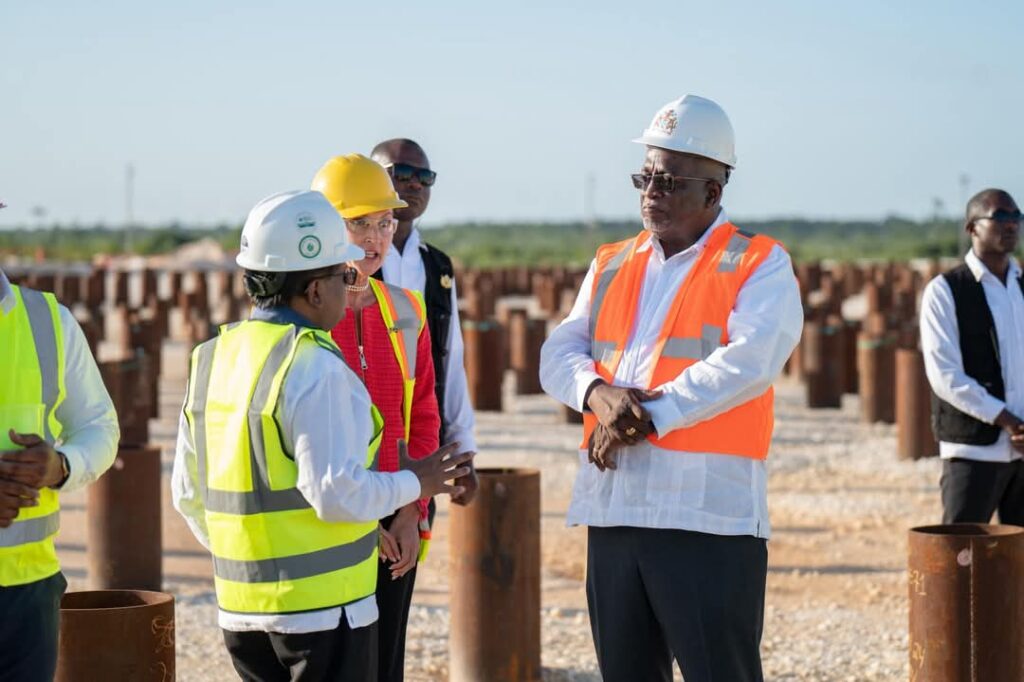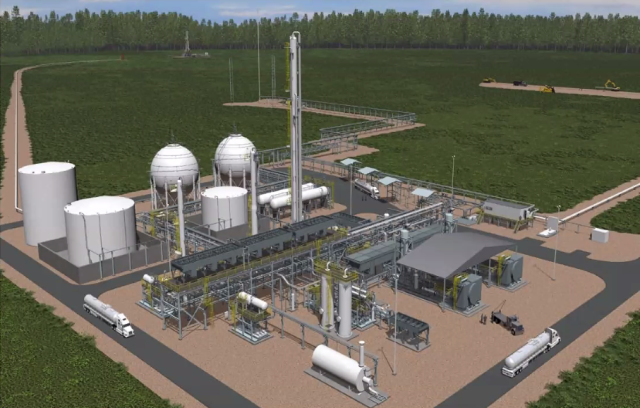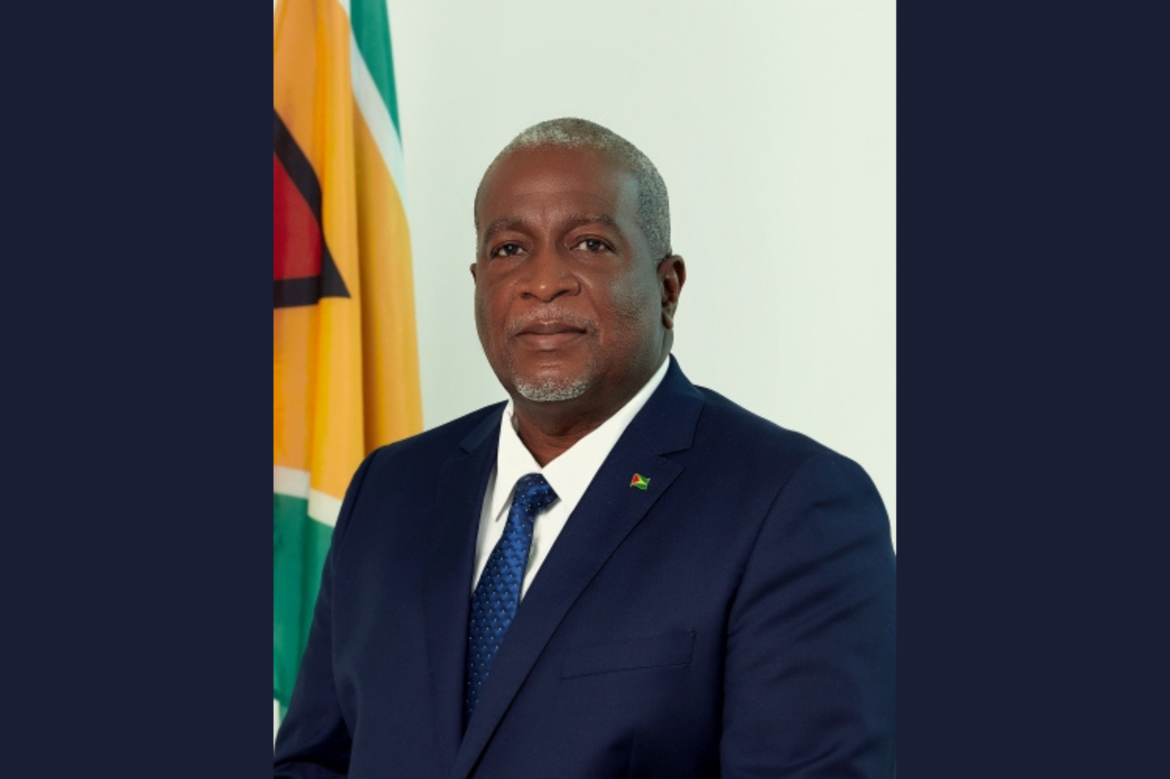Prime Minister Brigadier (Ret’d), the Honourable Mark Phillips, who holds responsibility for the nation’s energy sector.
Georgetown, January 26, 2025 – Guyana has made significant progress in clean and renewable energy development over the past five years, driven by accelerated efforts to build a resilient energy sector that benefits all Guyanese.
These efforts have focused on creating a more integrated and efficient energy system to support the rapid transition to indigenous, low-carbon resources, expand affordable, reliable, and stable energy access across the country, and actively reshape the local energy landscape. The national goal is to ensure energy security, foster economic growth, and attract innovation and investment.
Clean energy, an eco-friendly alternative energy source to fossil fuels that reduces greenhouse gas emissions and helps to mitigate the impacts of climate change, is crucial for the country’s long-term sustainable growth and ongoing energy transition.
For this reason, the Government of Guyana has taken urgent actions to accelerate the energy transition, aligned with the clean and renewable energy objectives of the Low Carbon Development Strategy (2030), and positioned Guyana as one of the leaders in sustainable energy practices within the Caribbean region.

At its core, the LCDS 2030 is our blueprint for advancing a sustainable, low-carbon pathway that leverages the socio-economic opportunities provided by Guyana’s forests and ecosystem services. Central to the LCDS 2030 is the goal to stimulate clean energy growth, increase the share of renewable energy in the national energy mix, and decouple economic growth from the use of imported fossil fuels for electricity generation.
Today, Guyana proudly joins the United Nations and the global community in observing International Day of Clean Energy 2025, celebrated annually on January 26. This day aims to advance discussions on the environmental benefits of the clean energy transition and mobilise climate-resilient actions, including the shift to alternative sources of energy, while continuing the global call to protect our planet, homes, and future.
As a nation, this day provides an opportune time for us to reflect on Guyana’s efforts through the years to collaborate and invest in its clean and renewable energy transition, with a focus on securing sustainable energy systems. This is particularly evident through the Energy Supply Matrix under the LCDS 2030, which aims to incorporate a mix of clean and renewable energy, that is, solar, hydro, wind, and natural gas energy resources, to meet the country’s energy needs over the next five years. It is envisioned that this plan will add more than 500 megawatts (MW) of electricity capacity for residential and commercial users.
With decarbonisation as one of the nation’s top priorities, the transition to clean and renewable energy has enabled Guyana to make remarkable strides in diversifying its energy systems. This allows local businesses and households to not only capitalise on opportunities, but also manage climate-related risks.
Climate change poses a great challenge and considerable risks. We must take responsibility for our actions to reduce our environmental impact, and ensure sustainability becomes our daily culture, to ensure that we are creating a better and brighter future for generations to come. As the world faces rising greenhouse gas emissions due to climate change, our nation’s robust and proactive measures to prioritise modern clean and renewable energy solutions are paving the way for national progress and development.

Guyana’s transformative energy initiatives include the landmark Gas-to-Energy (GtE) Project that aims to construct a 300-megawatt (MW) combined-cycle gas turbine power plant and an Integrated Natural Gas Liquid (NGL) plant at Wales, West Bank Demerara, Region Three (Essequibo Islands-West Demerara). This project will provide a cleaner energy source, to reduce the country’s current dependence on more polluting energy sources such as heavy fuel oil and diesel for power generation. It will also deliver more affordable and reliable energy by significantly reducing the cost of electricity by 50 per cent. The natural gas infrastructure is the single largest investment in the electricity sector, and the largest Engineering, Procurement and Construction (EPC) contract undertaken in Guyana to date.
Guyana officially signed a US$527 million loan agreement with the US Export-Import (EXIM) Bank for the Gas-to-Energy Project, on January 10, 2025, at the project site. Upon completion, the GtE project is expected to save Guyanese consumers more than US$250 million annually. These savings will primarily result from a reduction in electricity rates. Additionally, the pipeline installation for the Gas-to-Energy project was completed in 2024, and the integrated gas processing facility is expected to be completed in 2025.
Natural gas will play a key role in the country’s energy transition as it also develops its hydropower potential, commencing with the 165MW Amaila Falls Hydropower Project (AFHP). This project is aimed at supporting the expansion of renewable energy in the national grid. Furthermore, the country’s electric utility will also be adding 33MW of utility scale solar power to further decarbonize the power sector.
Additional investments to improve access to renewable energy, particularly in Hinterland communities, include the recent commissioning of the 0.7MW Moco Moco Hydropower Plant in Region Nine (Upper Takutu-Upper Essequibo). For the first time in Guyana’s history, a hydropower plant, solar farm, and diesel generators are working together to provide energy. Two other small hydropower projects are also being implemented in Kumu, Region Nine, and Kato, Region Eight (Potaro-Siparuni).
National renewable energy projects, such as the off-grid 30,000 Solar Home Energy Systems Project, launched in 2023, are also pushing large-scale electrification in Hinterland and riverine communities. The distribution of 30,000 160-watt solar photovoltaic (PV) systems has been completed, and this adds over 4.8MW of capacity, benefitting approximately 140,000 person in more than 245 communities.
Between 2020 to 2024, Guyana has also increased its investment in solar PV technology, including three utility-scale solar PV farms, and 31 solar mini-grids. This investment has increased solar PV installed capacity at public buildings, utility-scale solar PV farms and solar mini-grids to an installed capacity of 17.37 megawatts (MW) in 2024.
Guyana’s energy sector transformation has also fostered the development of the electric mobility industry. The government has introduced a low-carbon transportation network to support the uptake of EVs. The country now has six (6) publicly accessible electric vehicle charging facilities in Regions 3, 4, and 6, which aim to promote alternative energy sources in the transportation sector and encourage investments in more environmentally friendly vehicles. As part of its fiscal measures, the Government has removed the 14 percent VAT on electric motor vehicles less than four years old and increased the writing-down allowance applicable for all-electric motor vehicles to 50 per cent annually to encourage electric mobility.
The nation’s unwavering commitment to the clean and renewable energy transition is embodied in our signing of the Paris Agreement, which Guyana embraces through its Low Carbon Development Strategy (LCDS) 2030. Today, this steadfast commitment is even further demonstrated by our efforts to achieve the United Nations Sustainable Development Goal 7, ensuring that all Guyanese have access to affordable, reliable, stable, and modern energy.
Guyana continues to engage and collaborate with multiple energy and cross-sector stakeholders, and industry players to implement clean and renewable energy initiatives. The nation is adapting to the challenges posed by climate change, and promoting sustainable energy-efficient lifestyles among Guyanese, while building capacity to facilitate the requisite technical and regulatory support for effective clean energy transitions.
On this International Day of Clean Energy, Guyana recognises the significant progress made in accelerating access to clean and renewable energy access nationwide that supports social, economic, environmental, and human development nationwide.
Guyana remains dedicated to advancing national and global efforts to address climate change and continue the transition to clean energy, while striving to achieve a sustainable, secure, and thriving low-carbon future for all. Happy International Day of Clean Energy!

